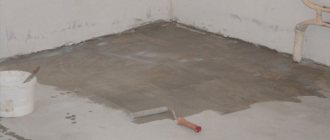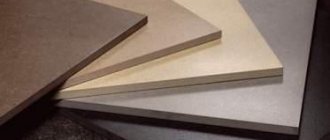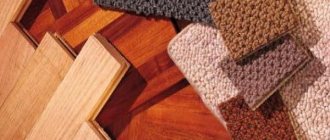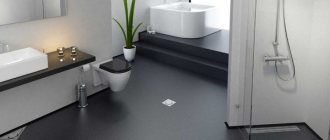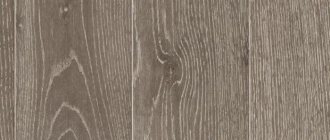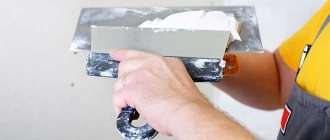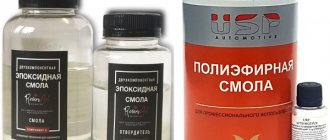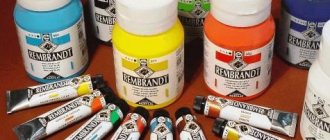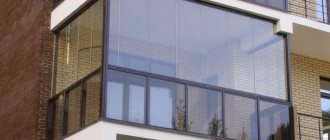Those who choose flooring often have to decide which is better: engineered wood or laminate. They usually compare in such aspects as sustainability, environmental friendliness, durability, ease of maintenance and installation in order to find out which material is better.
Both of these coatings are in demand and widespread on the market. But in order to make your choice, you need to understand their main characteristics and features, know what the difference is between these coatings, how they differ from each other.
Features of flooring
Flooring materials have features that depend on production technology and structure. This imposes certain restrictions that must be taken into account when choosing the preferred option.
Parquet floor
Parquet board is a popular variety with excellent decorative qualities and rich selection. The product has a multilayer structure:
- The top (front) layer is a cut of valuable wood. Its thickness varies from 3 to 6 mm, so the coating can be scraped and sanded.
- The middle layer is located perpendicular to the rest. It is made from less valuable wood and serves to stabilize and compensate for possible stress or expansion. The size of such a layer ranges from 13 to 20 mm. This is where the locking connection is located.
- The lower layer also represents a cut of the least valuable types of wood, most often coniferous species. Its thickness ranges from 8 to 10 mm. It is necessary to give rigidity to the panel.
The multilayer structure of the parquet board gives it unique strength
The production technology of the material consists of gluing all layers. But the top coating can be heterogeneous and have several cuts, so there are single-strip, two-strip and three-strip options. A more complex structure gives visual appeal, but there is also a minus - if operating conditions are violated, the material is subject to structural deformation. The parts are coated on top with protective and decorative mixtures (varnish or oils).
On a note! There is piece parquet, which is significantly different from parquet boards. It is a small-format, unprocessed variety of array.
The characteristics of block parquet and solid boards are similar
Engineering board
This material is a relatively new type of flooring product. In essence, it is similar to the previous version: it has a multilayer structure of two or three layers. The main difference is that high-grade moisture-resistant plywood is always used as the bottom layer.
The structure of the board looks like this:
- The top layer is more than 5 mm, made from valuable tree species that are highly durable: oak, ash, maple, walnut. This allows for repeated sanding and scraping.
- With a three-layer structure, the middle is occupied by a layer of less valuable types of wood, located perpendicular to the rest.
- The bottom layer is plywood more than 12 mm thick.
Engineered board appeared relatively recently and quickly became popular
It’s impossible to say for sure which is better: engineered or parquet boards. On top, both materials are treated with protective compounds with a decorative effect, but thanks to improved technology for joining layers and the use of high-quality adhesives, the engineered product is less susceptible to various types of influences. In addition, due to the presence of a moisture-resistant plywood base, it is possible to perform work in conditions of variable humidity and temperature changes. Also, engineered board is the best option when installing a warm water floor system. Therefore, you need to make a choice in favor of one or another material based on the specific situation.
The structure of parquet and engineered boards is similar
On a note! Modern varieties have a complex base with many notches. This feature makes the elements less susceptible to any loads and influences.
Laminate
This variety has a structure consisting of more layers. But natural wood is not used to make such material, so it is considered artificial. Although the base is a wood product - MDF board.
All laminate flooring has the same structure
Sequence of layers:
- Film providing reliable protection.
- Special paper that imitates the desired decorative effect.
- Moisture-resistant paper impregnated with resin.
- Panel made of MDF or similar material.
- Stabilizing protective layer of melamine.
The thickness of such a lamella cannot be less than 7-8 mm. Laminate can be used for household or technical purposes (office, commercial) and has special digital markings that indicate the degree of permissible load.
Laminate has 7 wear resistance classes, each class is intended for a specific type of premises
Due to its structure, the material is excellent both for laying on heated floors and for use in unheated or intermittently heated rooms, which makes it similar to the engineering variety. This is an undeniable advantage. Installation of such products is the least labor-intensive, although it has its own characteristics.
Solid board
This flooring material is completely natural, as it is made from a single piece of valuable wood, which means it is absolutely environmentally friendly. The elements are coated with protective compounds to highlight the natural texture or color.
The construction of a massive coating is extremely simple, yet the strength is very high
Structure:
- The top layer is responsible for visual appeal. Its thickness usually exceeds 6-8 mm, due to which the material can be subjected to repeated scraping and grinding.
- The lower one is the location of the lock connection. Due to the thickness of over 12 mm, maximum reliability and hardness is ensured.
The array is more demanding in preparation and installation procedures; it does not tolerate increases and decreases in humidity and temperature changes. Therefore, it is recommended to use this material in rooms with appropriate conditions, then it allows you to create the desired microclimate.
Solid wood is considered the most durable, but it is also the most expensive
Attention! There is an alternative to a solid array - two- or three-layer material. It is made from one rock, but is divided into layers. This allows for greater stability.
Installation work
Both of these types of flooring should be installed on as level a base as possible. The surface material does not matter here. However, preliminary preparation is required.
Before installing the laminate, you need to find out what the moisture content of the rough base is. If during use it is more than 20-25%, the coating may become deformed.
It is better to lay both parquet and laminate on the most even surface possible.
How to prepare the surface of the subfloor is determined by its type:
- concrete base, where height differences are a maximum of a couple of millimeters. Thoroughly clean from dust and then coat with primer;
- boardwalk made on joists. Cover with plywood in two layers, shifting the top sheet in relation to the bottom.
If the floor has already been covered with parquet or laminate, it is worth checking whether there are creaking fragments that can be fixed in one place with adhesives. Laminate and parquet are not applied to soft coverings (carpet, linoleum).
Laminate and parquet differ in some other ways. Laminate flooring can be laid even immediately after purchase. However, before installation, the parquet should be kept for a day or two in the room where it will be installed: the product must get used to the new conditions.
Before installation, the parquet should be left in the room for one or two days so that it can rest.
When laying parquet or laminate flooring, it is necessary to use a waterproofing material. It is necessary that it can then be replaced with a cork backing. In addition, by creating a “warm floor”, you can install a floor structure made of parquet or laminate.
laminate and parquet underlay
Laying any of these two coatings requires compliance with compensation gaps: it is important that they remain along the perimeter of the room near the walls. When installing parquet and laminate, you need to hit the boards with a mallet
A piece of a similar strip must be inserted into a lock or into a wooden block
When installing parquet and laminate flooring, you need to hit the boards with a mallet. A piece of a similar strip must be inserted into a lock or into a wooden block.
When installing parquet or laminate flooring, the boards are beaten with a mallet
After laying laminate or parquet, you need to keep the temperature and humidity in the room constant for several days. Also, you cannot walk on the surface at this time.
Types of locking connections for laminate flooring
Types of material and standard sizes
The size of the described coating varies significantly among different manufacturers. It is also possible to make the product according to customer sizes. Typically, the dimensions of one element vary within the following limits:
- thickness - 12-20 mm;
- width - 12-45 cm;
- length - from half a meter to 6 m.
There are two-layer and three-layer floorboards on sale. The coatings also differ in the methods of decorative processing of the front surface - tinting, firing, scraping, brushing. Traces of wormholes are artificially created on the lamellas and severe abrasions are made.
Important! You can also buy both standard rectangular floorboards and products with curved longitudinal sides that most accurately imitate solid wood flooring.
Laying method
Consider the advantages of each method.
Laying in the lock:
- efficiency of work;
- the ability to lay the coating yourself;
- dismantling and installation in a new location;
- if a board is damaged, it is possible to disassemble a piece of flooring and lay it again, replacing the board with a new one;
- installation costs are significantly lower.
Glue method:
- allows you to lay the board in a single field throughout the apartment without breaks; sound insulation increases;
- no squeaking of the slats, quiet walking;
- maintainability - scraping, grinding. Sufficient thickness of the top layer allows the board to be restored after several years. Based on the results of restoration, it is possible not only to update the structure, but also to change the tone and select the optimal type of coating in accordance with the interior design.
Among the disadvantages of the adhesive method, the difficulty of installation should be noted. Not every master can cope with this task, so you need to entrust the work to a professional, especially if the installation takes place on a screed without plywood. Also, the cost of such work is an order of magnitude higher than floating installation (about 2-3 times), and it is necessary to purchase parquet chemicals: glue and primer. But such parquet will last a longer time, and it does not need to be replaced entirely, for example, after 10 years. It will be enough to sand and re-coat with varnish or oil.
Comparison of materials
To understand the difference between floor types of finishing products, it is necessary to evaluate their main characteristics.
Durability
Determining the maximum service life is not always easy, because various factors can affect the coating. Therefore, such a comparison is made based on the optimal values of humidity and temperature:
- Array.
With proper installation, compliance with operating conditions and appropriate care, the service life is at least 35-50 years before the need for the first scraping arises. The total duration can exceed 100-150 years. The durability of natural flooring largely depends on the name of the manufacturer - Engineered and parquet boards. The wear resistance of such varieties is almost at the same level. But the first option is more durable due to the greater thickness of the lamellas and production technology. The average service life, subject to all conditions, is usually about 25-30 years.
- Laminate. Durability depends on the chosen class: a household option will last at least 6-9 years, and a commercial one - up to 20-25 years.
If operating conditions are violated, the terms may be significantly reduced.
General characteristics of floor coverings in comparison
Strength
The strength parameters of each option differ markedly:
- Array. Made from whole sections of hardwood, the material successfully resists mechanical stress. But good strength indicators do not protect against destruction under the influence of moisture.
- Laminate. The strength of this material depends on the class. The most popular (household) options are not very stable, but the highest quality products can have strength comparable to solid wood.
- Tensile strength is the main difference between parquet boards and engineered boards. The first variety, due to the layer of soft rocks, is more susceptible to the slightest impact. The engineering version is able to maintain geometric integrity in extremely difficult conditions, which makes it more stable even compared to the array.
The tensile strength of modern engineered planks is much higher than that of traditional parquet boards
Naturally, a lot depends on the manufacturer and compliance with all rules and regulations.
Laying methods
Technology and installation methods are constantly being improved, which makes it possible to carry out the work exclusively independently. But the installation procedure for each option has its own characteristics.
- The most difficult thing to work with is an array.
It requires high-quality and long-term preparation of the base. Installation is most often carried out using glue with additional fixation with self-tapping screws. For greater strength, the parts are connected using a tongue-and-groove lock. Solid tongue-and-groove boards are the most labor-intensive to install - Laying engineered wood will also require good preparation. The material is laid on a concrete screed or plywood base, fixed with locking and adhesive. If there is a “warm floor” system, the use of the “floating” method is allowed.
- The parquet variety can be compared to laminate: it can be installed using all methods. The fastest installation option is to use a locking joint, which allows you to get a “floating” structure, but this will require laying a protective acoustic layer.
- The laminate is mounted on a substrate.
The most common locking system is Click, which allows flooring to be installed even on foundations with some errors. All modern floor coverings are joined with one of three types of locks
The most labor-intensive installation method, taking into account the entire range of measures for massive products. In addition, the piece type (parquet) requires subsequent processing of the coating and the application of protective compounds.
Terminology
Parquet board is an established term for three-layer parquet. Today, more than 90% of parquet boards have a locking connection and a similar structure of mutually perpendicular layers. In this article we will not consider parquet boards based on wood fiberboard (HDF), because... This is a technologically different product.
Engineering board is an established term only in Russia. In the world, “two-layer parquet boards” are more often used. The international term contains many contradictions, so the phrase “engineering board”, far from technical accuracy, is more understandable. Engineered planks usually mean parquet flooring with a plywood base.
What is the difference between laminate and parquet boards?
The common feature is the assembly method. Modern products are assembled by joining through a special lock, without the use of other fixing elements. Glue, clips and similar connectors are a thing of the past.
The main differences between laminate and parquet boards are the use of different raw materials and geometric parameters.
Laminate, laminated flooring is a type of decorative material made from dense fiberboard (MDF) or MDF (fine wood fraction).
Available in small planks or square shapes. Basic geometric parameters for rectangular products:
- thickness 6-14 mm;
- width 140-400 mm for rectangular products;
- length 900-1400 mm.
Products are in the form of squares, with a size on one side of 600-620 mm.
The laminate is equipped with a locking connection, colloquially called Click-click (click-click), from the sound made during assembly.
The coating consists of several layers:
- The lower one has stabilizing characteristics that help protect the product from deformation.
- The load-bearing, main one is made of a dense slab. The characteristics of the latter determine the strength of the laminate, which is designated by classes: 31, 32, 33 and 34. The most common product is with strength class 32. Higher values indicate that the product can be used in public places - offices, shops, etc.
- Decorative - gives various design solutions for the design of the top layer. The material used is special paper on which various designs are applied.
- Protective - protects the surface of the product from abrasion. To do this, the semi-finished product is coated with several layers of melamine or acrylic resin. The characteristic is denoted by the abbreviation AC3, AC4, AC5 and AC6.
The coating is a final product that is not subject to additional operations during operation: grinding, varnishing, tinting. The warranty period is up to 25 years.
Laminate is widely used for finishing home decoration and is used in industrial premises due to its successful combination of consumer properties and price.
Parquet board (parquet laminate) is one of the types of flooring. It is made from several types of wood, coated on top with a protective composition.
The board usually consists of three layers:
- The lower one is the supporting one. It is made from coniferous trees, more often pine or spruce. The thickness is about 1.5 mm. The long fraction is placed perpendicular to the subsequent layer.
- The main one has a size of 8-9 mm. Coniferous trees are used for it, but deciduous wood can also be used. A rotary-angle lock is installed in this layer, which can significantly reduce the time of laying the floor covering.
- The top one performs a decorative function. It is made from valuable wood with a thickness of 0.5-6 mm. The elements are laid across the previous layer.
The outer surface is covered with decorative and protective compounds. The design allows for 2-4 sanding and varnishing operations during the entire period of use of the floor covering.
Basic geometric parameters:
- thickness 10-22 mm;
- width 100-200 mm;
- length 110-250 cm.
What to choose?
To choose the appropriate material, you need to take into account the opinions of experts and the specific situation. General recommendations:
- The array may be attractive and environmentally friendly, but it requires large financial costs, which will only pay off if all operating conditions are met.
- Laminate is an acceptable and inexpensive option that allows you to complete the work in a short time.
- Parquet and engineered boards have similar parameters, but the second option is more practical. When choosing these options, you need to remember that grinding and scraping are very labor-intensive procedures that are best left to professionals.
Comparative characteristics of popular floor coverings
The best choice in most cases is engineered wood or laminate. The first variety has all the advantages of natural material and excellent stability, while the second does not require serious financial and physical costs.
Short conclusion
Let's summarize briefly. “Engineer” and laminate panels are completely different floor coverings. Laminate is cheaper, can be installed quickly and inexpensively, has an attractive appearance, is repairable and will last quite a long time. But it feels colder to the touch, “sounds” louder and ages more noticeably.
The board is more expensive, more difficult to install, but at the same time it is more beautiful, warmer and more pleasant to the touch. It is possible to update it, which significantly extends its service life.
- Material prepared by: Inna Yasinovskaya
How do you know which is better, laminate or engineered wood?
Laminate?... Engineered board?.. What can look luxurious on the floor, talking about the status of the owner of the house, and at the same time, without instilling the fear of ruining something when walking. You don’t want to feel like you’re in a museum, when an extra step and damage to the coating can affect the appearance of the entire decoration.
It is the floor that is most exposed to mechanical stress - constant walking with or without shoes, contact with water, dirt, grease, etc. (it all depends on the room). Then it’s worth weighing all the pros and cons and choosing the truly optimal one option.
(2 ratings, average 4 out of 5)
Humidity level
Modern apartments are subject to seasonal fluctuations in humidity levels, which are especially pronounced when there is insufficient ventilation. In summer, such rooms are quite humid, but as the central heating system begins to operate intensively, the humidity level drops sharply.
Bright, spacious Scandinavian kitchen
If we talk about the influence of this process on natural wood, then in the summer it accumulates moisture (at the same time its linear dimensions increase somewhat), and in winter, on the contrary, it releases, dries out, and decreases in size. Under the influence of such vibrations, the joining seams begin to diverge, and gaps form between the individual parquet floors.
Chic living room with lots of wood
For lovers of white interiors
1 5
